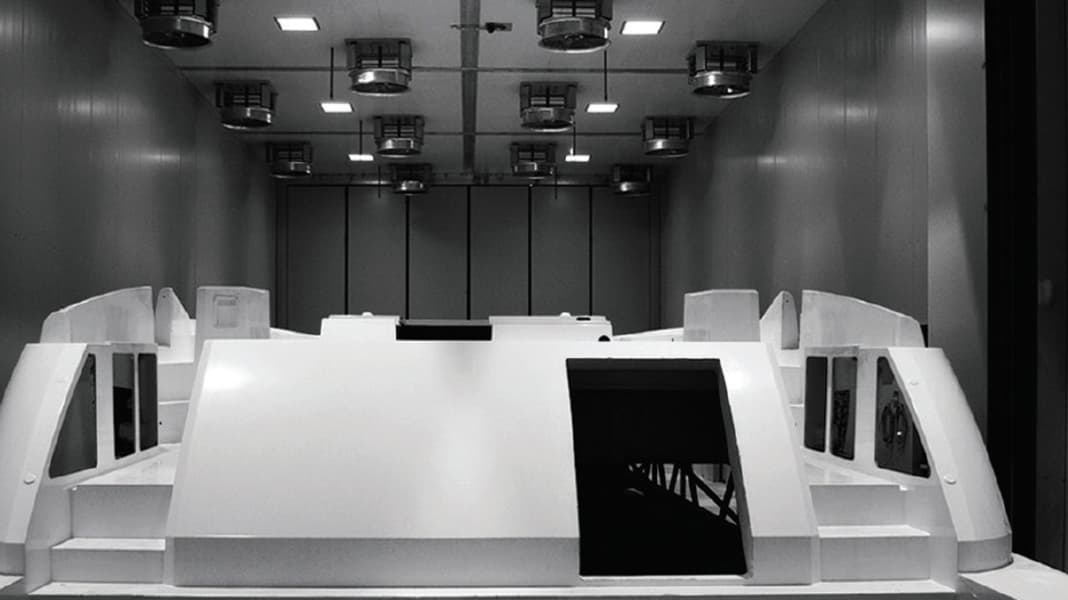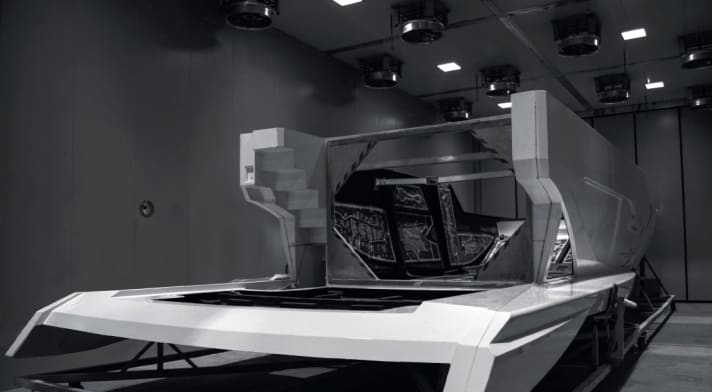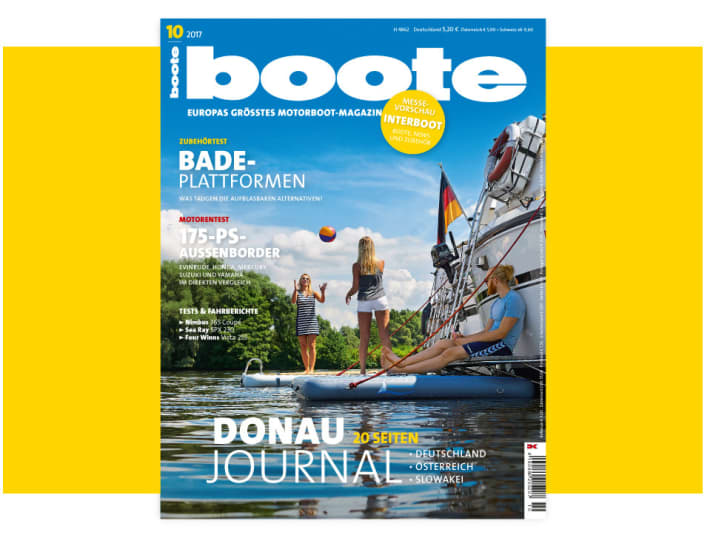
The advantages and disadvantages of the high-strength material carbon in boatbuilding have been written and spoken about extensively. However, the material and the necessary technology are still a long way from being widely accepted.
The Italian boat builders from Azimut now want to change this. After almost ten years of development and testing, the shipyard based in Avigliana near Turin can now draw on technology that is ready for series production, the centrepiece of which is the carbon fibre.is a 26 metre long "oven" in which complete deck superstructures made of carbon are manufactured and "baked"can.
Carbon is currently used in seven models from 66 feet in length, such as the Magellano 66, the Azimut 66 and the Azimut 72.

With the new technologyReduce weight by up to 30 per centHowever, this saving should not be translated into higher speeds, but should benefit comfort on board. In practice, the use of carbon in combination with epoxy resin, also known as CFRP, makes it possible to achieve completely new levels of comfort.New room and design concepts that yacht designers could previously only dream of.
They are designed to provide more space and larger interiors with the same external dimensions. A current example is the recently launched Azimut S7. By dispensing with additional struts and stiffeners in the deck superstructure, theCentre of gravity deeper into the torso, whichCurl of the boat, i.e. the movement around the longitudinal axis, by up to 15 per cent.
In addition, extremelylarge flybridges - an important feature of Italian boats and yachts. It would also be conceivable to reduce the engine power without having to accept a loss of speed; however, this goal is of secondary importance to Azimut.
Azimut uses an oven specially designed for the company to "bake" complete decks and their superstructures. With a height of 6 metres, a width of 8 metres and a length of 26 metres, it can bakeComplete structures in one piece produce. The previously customary production of small parts, which then had to be laboriously joined together, is no longer necessary.
The electrically generated heat of up to 100 degrees is distributed in the room by means of 24 separately controllable fans, so that certain areas of the structure to be baked, the so-called hotspots, can be supplied with the optimum temperature for them.
Monitored The entire process, which can take up to a day depending on the component, is controlled by various computers that receive their data from countless sensors on the component. It is clear that this type of technology was not available from one day to the next.
Francesco Boromei, Marketing Director at Azimut, comments: "If you want to build in carbon, you have to completely rethink your approach. Our engineers and technicians have invested many years of development and testing in this pioneering technology." Of course, this also applies to the rest of the workforce.
All employees in carbon fibre production had toSpecial training and further education programmes in the shipyard before they were allowed to put their hands on the new ships for the first time. In total, Azimut estimates theAdditional costs of carbon production to around 40 per cent compared to conventional GRP construction. However, this rate will fall quickly with the increased use of series production, meaning that price increases for the end customer are unlikely.
"Our goal is first and foremost Modern, sleek shapes and room conceptsthat other shipyards that only build traditional plastic boats in GRP cannot offer," Boromei told BOOTE.
Anyone who wants to see the new carbon boats from Azimut will have the opportunity to do so at the upcoming trade fairs, for example in Cannes or at the Düsseldorf boot in January.
This article is from BOOTE 10/2017.

